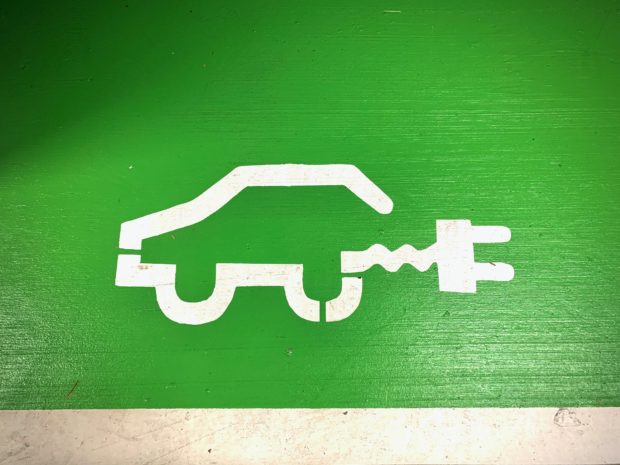The difference between EVs and hybrid cars
The main difference between electric vehicles (EVs) and hybrid cars is how they are powered. An EV gets its power exclusively from electricity, while hybrid cars – as the name suggests – run on a mix of electricity and petrol or diesel. But, there is a significant difference between traditional hybrid electric vehicles (HEVs) and plug-in hybrids (PHEVs).
Traditional hybrid cars have a battery, but you cannot plug it into an electricity source. Instead, the car is fuelled by an internal combustion engine that runs on petrol or diesel. It is power from this engine that charges the car’s battery.
Plug-in hybrid cars are different because you can charge the battery by plugging it into a wall outlet or charging equipment. Unlike traditional hybrid cars, they can run entirely on electric power until the battery has nearly run down. Then, they automatically switch to running on the combustion engine.
The fuel economy factor
Hybrid cars tend to have much better fuel economy than the equivalent petrol or diesel car. We know that a petrol or diesel car turns the energy from fossil fuels into kinetic energy. The process of braking simply wastes this energy. But with hybrid cars, some of this energy goes towards recharging the car’s battery.
The electric motor of a hybrid car is responsible both for powering the vehicle and controlling the resistance it needs to slow down. When you apply the brakes to slow the car down, the resistance reduces speed and simultaneously recharges the batteries. This process is called regenerative braking. Cars with regenerative braking have better fuel economy because of this ability to capture and store energy that would otherwise be wasted.
Having an electric motor as well as petrol power also means that hybrid cars can potentially have a smaller engine for the same power. Ultimately, for the non-plug-in variety of hybrid, all the power is coming from a petrol or diesel source. But, you get a lot more mileage to the gallon than with a traditional engine.
For drivers of petrol cars, braking too hard is a significant cause of wasted fuel. Some drivers employ fuel-saving techniques, such as allowing themselves more time to slow down. Hybrid cars make this behavioural change easier because they tend to slow down more quickly when you take your foot off the accelerator. This is another reason why they have better fuel economy than traditional vehicles.
The electric motor and automatic shut-off

Perhaps the most significant behavioural cause of poor fuel economy is engine idling. You get zero miles to the gallon when you are running the engine of a stationary car, yet many drivers have developed this bad habit. Some drivers still believe the myth that idling uses less fuel than stopping and restarting the engine, but the reverse is true. Running the engine of a car that is not moving actually wastes more fuel and causes more wear and tear. If your car stops for more than 60 seconds, it is better to turn off the engine. For smaller vehicles, some sources advise a limit of 10 seconds.
Other drivers may wrongly believe they need to ‘warm up’ the car by running the engine before moving. Again, this is a myth.
The average vehicle wastes a cup of fuel every 10 minutes it idles. The bigger the engine, the more fuel it wastes. But, many hybrid cars have a feature that eliminates this problem – a start-stop system that shuts down the engine when the car is not moving. There is no need for the driver to do anything; the car’s electronics detect when it is coming to a stop and switch the engine off automatically. It restarts automatically too, as soon as you put your foot on the clutch. Being stuck in traffic or using a drive-through service no longer equals wasted fuel.
The history of hybrid cars
Hybrid cars and their fully electric counterparts are not new inventions. Motoring historians believe that Scottish inventor Robert Anderson created the first electric car as early as the 1830s. A disposable battery powered the electric motor, and crude oil was the fuel source for the electricity. By 1900, there were more electric cars on the roads than petrol-fuelled vehicles.
Hybrid cars soon followed. As early as 1905, American engineer H. Piper filed a patent for a petrol-electric hybrid car similar to today’s hybrids. But, the timing was against him. Henry Ford introduced the Model T to the world in 1908. By the time Piper received his patent in 1909, the affordable and mass-produced Model T was already in ascendancy. One of the problems was that Piper’s hybrid prototype was focused not on saving energy, as with today’s hybrid cars, but on speed. In the early 20th century, petrol cars were faster. It would be nearly a century before hybrid cars began to challenge the petrol car’s supremacy.
The Toyota Prius: A hybrid pioneer

The Toyota Prius made headlines in 1997 as the world’s first mass-produced hybrid passenger vehicle. The Toyota Motor Corporation had spent five years working to create a low-emission vehicle suitable for everyday, practical purposes. Toyota did not create the concept of a hybrid car, but it was the first manufacturer to mass produce them.
The Toyota Prius is known as a parallel hybrid car. The petrol engine and electric motor are separate, but work to complement each other. At low speeds, the electric motor works alone, but the internal combustion engine kicks in when it is time to accelerate.
There were many technical challenges to overcome in creating this. In November 1995, the Toyota manufacturing team finished assembling all the parts into a prototype car – only to find that they could not get it to run. As they solved one issue with the car’s functioning, another would crop up. It took 49 days to get the Toyota Prius prototype running. Even then, they only managed to drive it 500 metres. But by October 1997, the Prius was ready for launch. Later that year, it won Japan Car of the Year.
The Toyota Prius was launched on the global market in 2000. It soon became an environmentally friendly status symbol. Early adopters of the Prius included Leonardo DiCaprio, Madonna and Tom Hanks – who later auctioned off his customised 2004 Prius for charity. A galaxy of stars, from Cameron Diaz to Harrison Ford, made their entrance to the 2003 Oscars in a Prius.
The global shift to electric

In October 2022, the European Union (EU) finalised legislation requiring new cars and vans to emit zero emissions by 2035. This will effectively prohibit the sale of new petrol and diesel cars in the EU’s 27 countries. Sales of petrol and diesel cars were already falling in the EU before the legislation came in.
The EU is not alone in the transition to electric vehicles. President Biden’s economic plan for the United States includes generating an EV manufacturing boom. Under this plan, EVs would make up 50 per cent of cars sold in the United States by 2030. Sales of EVs there have tripled since he took office.
Many other countries have committed to phasing out the internal combustion engine in favour of the electric motor. At COP26, a long list of nations signed a declaration. “We commit to rapidly accelerating the transition to zero-emission vehicles to achieve the goals of the Paris Agreement.” This promise may be somewhat toothless as it does not detail specific actions, but it acknowledges the global need to electrify private transport. Several of the signatories, including Norway, the Netherlands and the UK, have set their own more ambitious pledges.
Globally, data platform Statista predicts that battery electric vehicles will make up around 18 per cent of car sales in 2030.
Why choose a hybrid car today
Electric cars may have been grabbing the headlines due to global debate about their potential to decarbonise transport. But, hybrid cars are a quieter success story. In 2021, hybrid cars achieved record sales in the United States. In the second quarter of 2022, they increased their EU market share.
There are still many barriers to the mass uptake of fully electric vehicles. Although an EV may be the more cost-effective option in the long run, high sticker prices make them unaffordable for many. However, perhaps an even bigger deterrent is range anxiety – the concern about running out of power on long journeys. Hybrid cars can take away this anxiety because they have a backup source of fuel.
Brett Smith, Technology Director at the Centre for Automotive Research in the US, told Reuters in a 2022 interview: “Hybrids offer a really intriguing mix of fuel economy performance without some of the huge drawbacks that electric vehicles present.”
The manufacturers of hybrid cars are clearly trying to take advantage of this sweet spot. In November 2022, Toyota introduced the fifth generation of the Prius. Toyota’s publicity around this plug-in hybrid focuses on the new and improved battery, boasting a drastic improvement from previous generations.
Why some hybrid cars are so powerful
Electric motors tend to be more efficient at low speeds and petrol power at high speeds. A combination of the two has the potential to make for a much more powerful car.
Cars are much heavier now than they were a few decades ago. This means that the rotational force of the engine, known as the car’s torque, is an important factor. Cars need more torque to get moving. Diesel-powered vehicles offer more torque at lower engine revolutions per minute than petrol engines, but electric cars are even better. An internal combustion engine takes a few seconds of revving to reach optimal torque power. Conversely, electric engines produce all their torque instantly. This gives them a big advantage at lower speeds. The torque of the electric motor will drop at higher speeds. However, in a hybrid car, the petrol or diesel fuel gives the car the power it needs to keep going.
We often talk about the electric motor or petrol engine “taking over” in a hybrid car, but this somewhat misrepresents how they work. Much of the time, the petrol engine and electric motors work together, with varying amounts of power from each. There is no set moment when one type of power cuts out and the other kicks in. Manufacturers of hybrid cars, such as Toyota, emphasise that the switching process is seamless.
Transitional transport

Will the global switch to EVs be just as seamless? In countries like South Africa, the transition may be slower than in Europe or the United States. Currently, there are a few barriers to choosing a completely electric vehicle, such as high ticket prices and range anxiety.
Driving a plug-in hybrid means that you are not completely dependent on what could be a patchy network of EV charging stations. But, you are also not completely fuelled by petrol or diesel. This means we can see hybrids as a transitional transport choice, offering a comfortable middle ground. They have a longer range than purely electric vehicles, they tend to cost less than EVs and they are also cheaper for short journeys. Yet they can be greener than a car with a traditional engine – depending on how you drive yours – and they are also lower maintenance.
EVs: The long-term answer
But, even in South Africa, electric vehicles are already a more cost-effective option in the long term. Petrol and diesel prices may have dropped in January 2023 thanks to lower global oil prices and a stronger rand, but they are still well above January 2022 prices. Fuel is not the only reason why EVs are more cost-effective. Maintenance costs can be as much as 50 per cent less, and electric cars hold their value for much longer.
They are also a lot easier and more pleasant to drive. There are no gear changes to worry about and no searching for a petrol station – just charge your car overnight like you would your cellphone. Another hidden benefit is that every time the grid gains a new piece of renewable capacity, an EV becomes greener to run. Conversely, petrol and diesel cars start off polluting and get dirtier as they age.
No wonder online searches for EVs jumped by 134 per cent in 2022. Web traffic clearly shows that in the past few years, South Africans have become intrigued by electric cars. However, price remains one barrier. Most new EVs cost at least R1 million, but choosing a second-hand vehicle could almost halve the ticket price.
Hybrids may be a good option for this transitional period. But in the future, as more electric vehicles enter South Africa’s market and the price falls, EVs will become the best choice for all motorists.
Related Articles
Compressed natural gas vehicles: Why they are just as bad
Unfortunately, compressed natural gas is not actually a green alternative fuel. CNG-powered vehicles are just as bad for the environment as their petrol or diesel counterparts.
Why electric cars are a better option in South Africa
South Africa’s car manufacturing industry can remain a key contributor to the economy if it pivots to electric as soon as possible.




